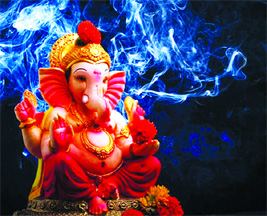
Ganesh Chaturthi or tilkut chauth fast is a festival famous to Hindus. This fast is famous by many names, such as Sakat Chauth, Sankat Chauth , Tilakut Chauth etc. Every month there are two Chaturthi dates. In one Shukla Paksha which is called Vinayaki Chaturthi, in another Krishna Paksha, it is called Sankashti Chaturthi. Sankashti means one who defeats crises. Lord Ganesha is considered as the God who can defeat the crisis. Hence women observe this fast for the longevity and happy life of their sons and all the distress of husband also goes away. On this day, women perform Lord Ganesha Puja with the Vidhi Vidhan and enjoy Sesame ladoos because Lord Ganesha loves laddus.
Significance of Sakat Chauth
Sakat Chauth is primarily dedicated to Lord Ganesha, the remover of obstacles and the god of wisdom and prosperity. It’s observed to seek the blessings of Lord Ganesha for the well-being and prosperity of family members.
Rituals and Observances
Fasting (Vrat)
Devotees observe a day-long fast on Sakat Chauth. The fast begins at sunrise and ends after sighting the moon in the evening. Married women often observe this fast for the well-being and longevity of their children.
Puja and Offerings
Families perform special prayers and rituals dedicated to Lord Ganesha. Offerings of jaggery, sesame seeds, and sweets like tilkut (a sweet made from sesame seeds and jaggery) are made to the deity.
Storytelling
Many households narrate the story associated with Sakat Chauth. The legend typically revolves around a devout merchant who inadvertently disturbed a snake on Sakat Chauth day. Later, he faced financial loss and illness. Seeking forgiveness and blessings, he observed a fast on Sakat Chauth and regained his prosperity and health, attributed to Lord Ganesha’s blessings.
Moon Sighting
The fast is broken after sighting the moon in the evening. Prayers are offered, and families come together to share a meal and break the fast.
Cultural Significance
Sakat Chauth is not just a religious observance but also reflects the cultural fabric of India. Families come together, and there’s a sense of unity and celebration within communities. It’s a time for sharing traditions, preparing traditional meals, and reinforcing familial bonds.
Legend
Hindu legend claims that a potter once lived in a village and produced pots. Once the pots were constructed, he used a furnace to harden them. He discovered that despite several tries, the flame was unable to harden the pots after he placed them in the furnace. He finally made a request for help to the king. The King went to Rajpurohit seeking advice and solutions to the problem. When the utensils are ready for the furnace, Rajpurohit advises the Bali of a little kid.
Following Rajpurohit’s advice, the King ruled that every household was required to bring a youngster to Bali every time, and every family had to consent to this.
Days went by. After a few days, an old mother with just one son was called upon to help the woman. The old woman was unhappy that day. She was upset because she had to make a child sacrifice on Sakat Chauth that day. She was a devoted devotee of Sakat. She provided “Dub ka Beeda” and one betel nut to her son as a form of defence. When his son was being thrown into the furnace, she urged him to accept the name of the Lord.
The young child was told to go inside the furnace. An old mother started to worship Goddess Sakat when the kid was put in the furnace.
One night was given over to the kiln’s preparation. The potter was shocked to see the kiln when he arrived the next morning to assess it. Along with the old woman’s son, who was found to be alive and well, he also found other kids who had been asked to help prepare the kiln. Since then, everyone has started to accept the goddess Sakat’s existence. For their boys’ protection, women offer prayers to the goddess Sakat.
Sakat Chauth Puja Vidhi
– After having a shower in the morning, recite Ganesha Ashtottara.
– Place the statue of Lord Ganesha on a spotless pedestal in the evening and embellish it with pretty flowers.
– Turn on a Diya and an agarbatti in front of the idol.
– The gods should receive fruit offerings.
– Offer your petitions to God.
– Present aarti to Lord Ganesha.
– Give the Moon Arghya, Til (sesame) Ladoos, and Durva grass (offering a mixture of water and milk to the Moon). Three times are designated for Arghya: Chaturthi Tithi, Mahaganapati, and Sankashtanashan Sri Ganeshji.
Regional Variations
While Sakat Chauth is primarily observed in North India, the customs and rituals might vary from region to region. Different communities have unique ways of celebrating this auspicious day, adding to the rich tapestry of Indian culture.
Sakat Chauth is more than a religious observance; it’s a celebration of faith, family, and tradition. It symbolizes the pursuit of divine blessings for the well-being and prosperity of loved ones. With its rituals, stories, and shared moments, Sakat Chauth stands as a testament to the cultural richness and spiritual fervor that define India’s festive landscape.





Be the first to comment